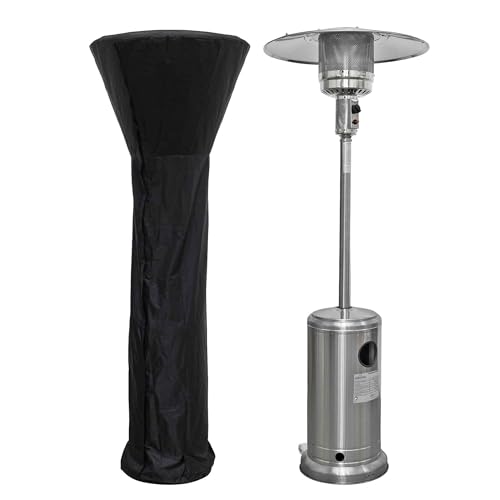The Essential Guide to Buying Patio Heating: Everything You Need to Know
As the weather condition turns cooler, lots of property owners begin to consider how to extend their outdoor home into the chilly months. Patio heating permits cozy events under the stars, improving year-round usability of patio areas, decks, and gardens. This short article will supply a detailed overview of patio heating options, elements to consider when buying, and responses to often asked questions.
Types of Patio Heaters
Patio heaters can be found in numerous designs and functionalities, each dealing with various user requirements. Here's a breakdown of the most popular options:
1. Propane Patio Heaters
- Description: These portable heaters operate on propane gas cylinders.
- Advantages:
- Easy to move and establish.
- Supplies immediate heat.
- Perfect for bigger outdoor areas.
- Considerations:
- Requires regular refilling of propane tanks.
- Might be limited by regional regulations on outdoor gas appliances.
2. Natural Gas Patio Heaters
- Description: Connected straight to a gas line.
- Advantages:
- No requirement for refilling; a continuous supply of hot gas.
- Cost-efficient in the long term for frequent usage.
- Factors to consider:
- Requires professional installation.
- Less portable than propane heaters.
3. Electric Patio Heaters
- Description: Heaters powered by electrical power.
- Advantages:
- Easy to set up and use; simply plug them in.
- Perfect for small events and limited outdoor spaces.
- Factors to consider:
- Less powerful than gas heaters; might not heat up big locations successfully.
- Requires access to electrical outlets.
4. Infrared Heaters
- Description: Heaters that use infrared technology to warm objects and individuals directly instead of heating the surrounding air.
- Benefits:
- Highly energy-efficient and eco-friendly.
- Immediate heat without waiting.
- Considerations:
- Effectiveness can be limited by wind.
- Usually more pricey than standard heaters.
5. Fire Pits and Tabletop Fireplaces
- Description: Open flame systems that can also serve as stylish outdoor decor.
- Advantages:
- Multifunctional; provides heat and ambiance.
- Considerations:
- Requires consistent supervision and maintenance.
- Less efficient heat circulation compared to other heaters.
Aspects to Consider When Buying Patio Heaters
Investing in patio heating needs mindful factor to consider to ensure you acquire a system that satisfies your specific needs. Below are essential factors to evaluate:
- Size of the Area:
The main consideration is the size of the outdoor space you want to heat. Bigger outdoor patios may need more effective heaters or numerous units to distribute heat efficiently. - Heating Capacity:
This is determined in BTUs (British Thermal Units). Typically, higher BTU rankings suggest a heater that can create more heat. - Mobility and Placement:
Determine whether you prefer a portable solution or a fixed installation. Think of where you plan to position the heater, and how typically you might need to move it. - Fuel Source:
Evaluate your preference for propane, natural gas, or electrical designs based upon availability and benefit. Each fuel type has actually associated expenses and considerations. - Safety Features:
Opt for designs geared up with security functions such as tip-over defense and automatic shut-off. This is vital when using heaters in outdoor spaces. - Style and Aesthetics:
Choosing a visually appealing heater can enhance your outdoor environment. Look for options that complement your existing furniture and design. - Weather Resistance:
If the heater will stay outdoors all year, consider designs created to endure numerous weather components such as rain or snow.
Comparison Table of Patio Heaters
| Type | Heat Source | Portability | Price Range | Pros | Cons |
|---|---|---|---|---|---|
| Propane Patio Heaters | Propane Gas | High | ₤ 100-₤ 400 | Immediate heat, portable | Requirements refilling, local guidelines |
| Natural Gas Heaters | Gas | Low | ₤ 300-₤ 700 | Constant supply, affordable | Requires installation |
| Electric Patio Heaters | Electrical energy | High | ₤ 50-₤ 300 | Easy to utilize, no fuel needed | Restricted range and heat |
| Infrared Heaters | Electrical energy | Medium | ₤ 150-₤ 500 | Efficient, instantaneous heat | Wind impacts, higher expense |
| Fire Pits/ Fireplaces | Wood/Gas | Variable | ₤ 100-₤ 600 | Decorative, multifunctional | Needs supervision, upkeep |
FAQs About Patio Heating
1. How many BTUs do I require for my patio?
The number of BTUs needed depends upon the size of your patio. A general standard is:
- Up to 20 sq ft: 10,000 BTUs
- 20-50 sq feet: 20,000 BTUs
- 50-100 sq feet: 30,000 BTUs
2. Are patio heaters safe to use?
Yes, as long as safety standards are followed. Search for heaters with security functions and guarantee they are run in well-ventilated locations.
3. Can electrical patio heaters be used indoors?
It is not suggested to use outdoor heaters inside your home due to the danger of fire and carbon monoxide buildup. Always verify manufacturer guidelines.
4. What is the typical expense to run a patio heater?
Running costs differ extensively based on the type of fuel and energy costs in your area. For Outdoor Space Heaters , average use might cost around ₤ 0.07-₤ 0.30 per hour.
5. How do I keep my patio heater?
Regular maintenance involves clearing out any particles, examining gas connections for leaks, and guaranteeing that electrical parts are safe and secure and operating.
Purchasing patio heating is an exceptional method to extend the enjoyment of outdoor spaces well into the cooler months. With various options offered, prospective purchasers need to examine their special requirements, space measurements, and preferred heating techniques. By thinking about the aspects and contrasts provided in this short article, homeowners can make a well-informed decision and ensure their patio stays a comfortable social center throughout the year.

